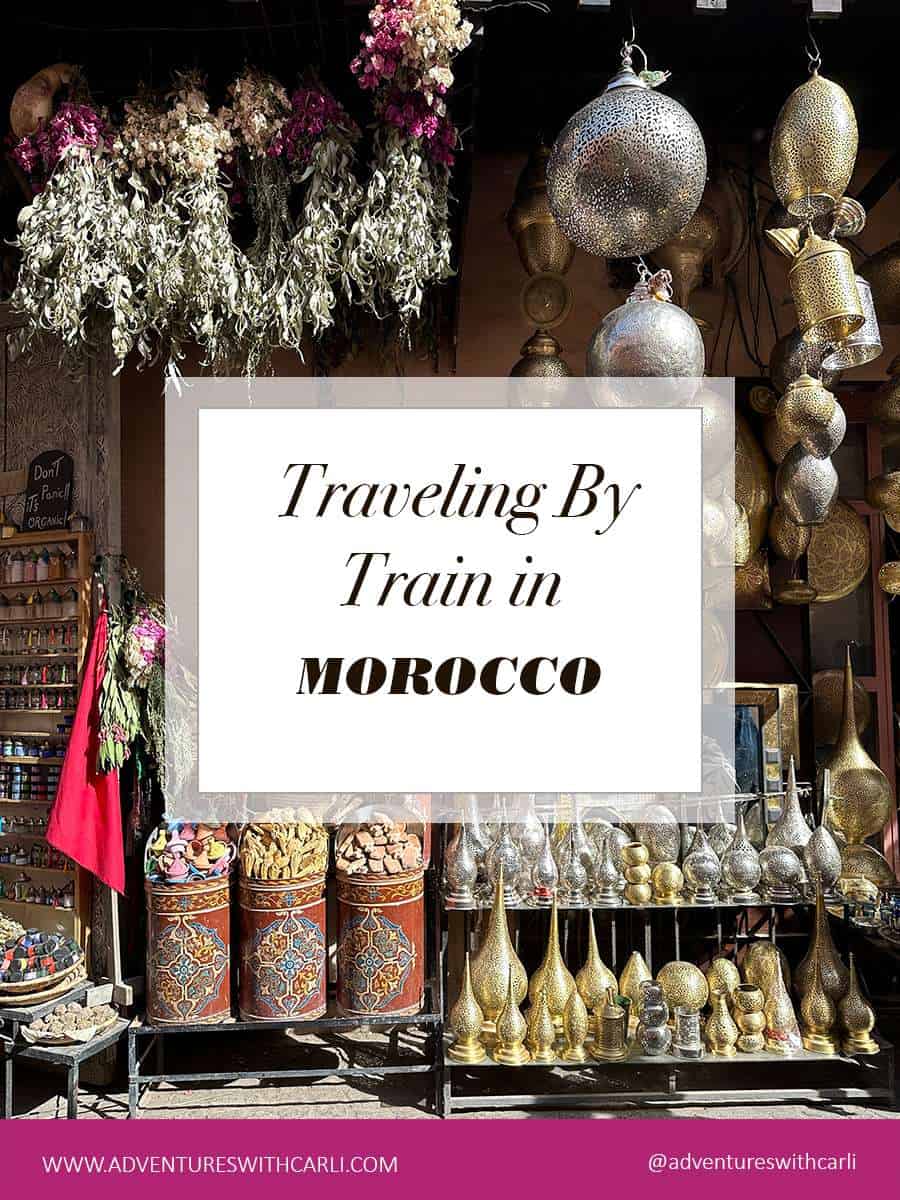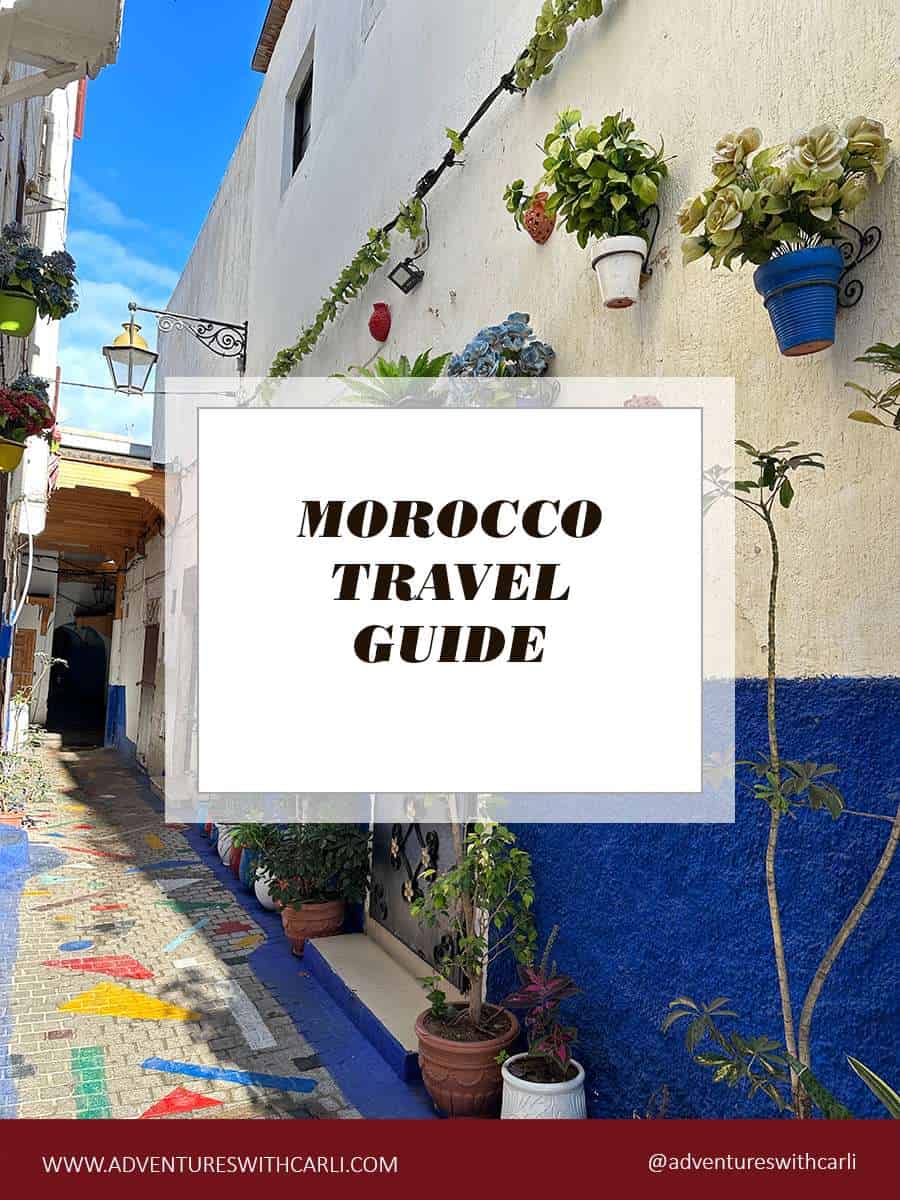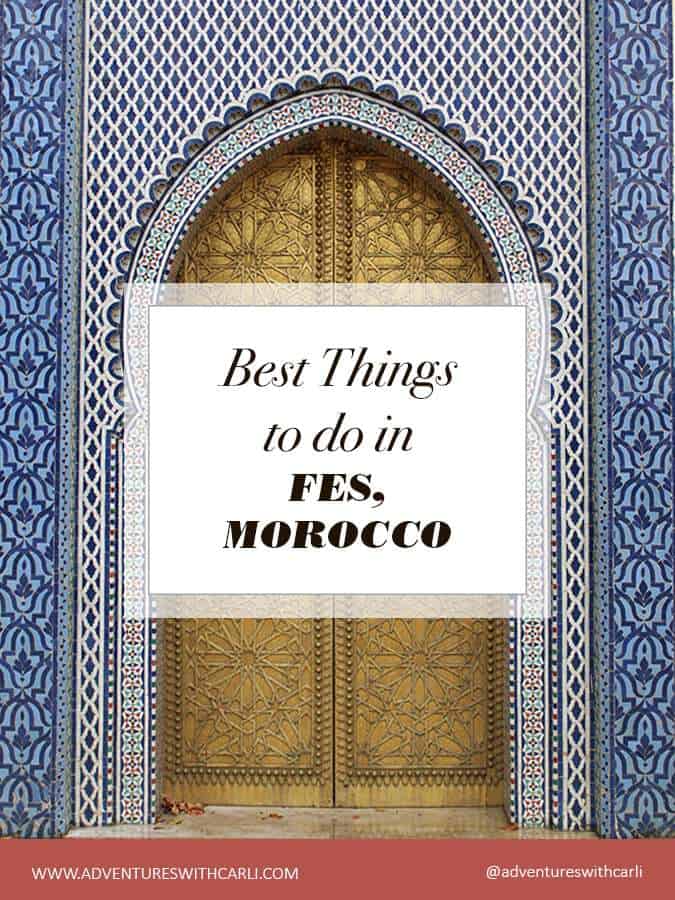One of the best ways to enjoy local cuisine while traveling is to learn how to cook the food. For an unforgettable meal, take a Marrakech cooking class.
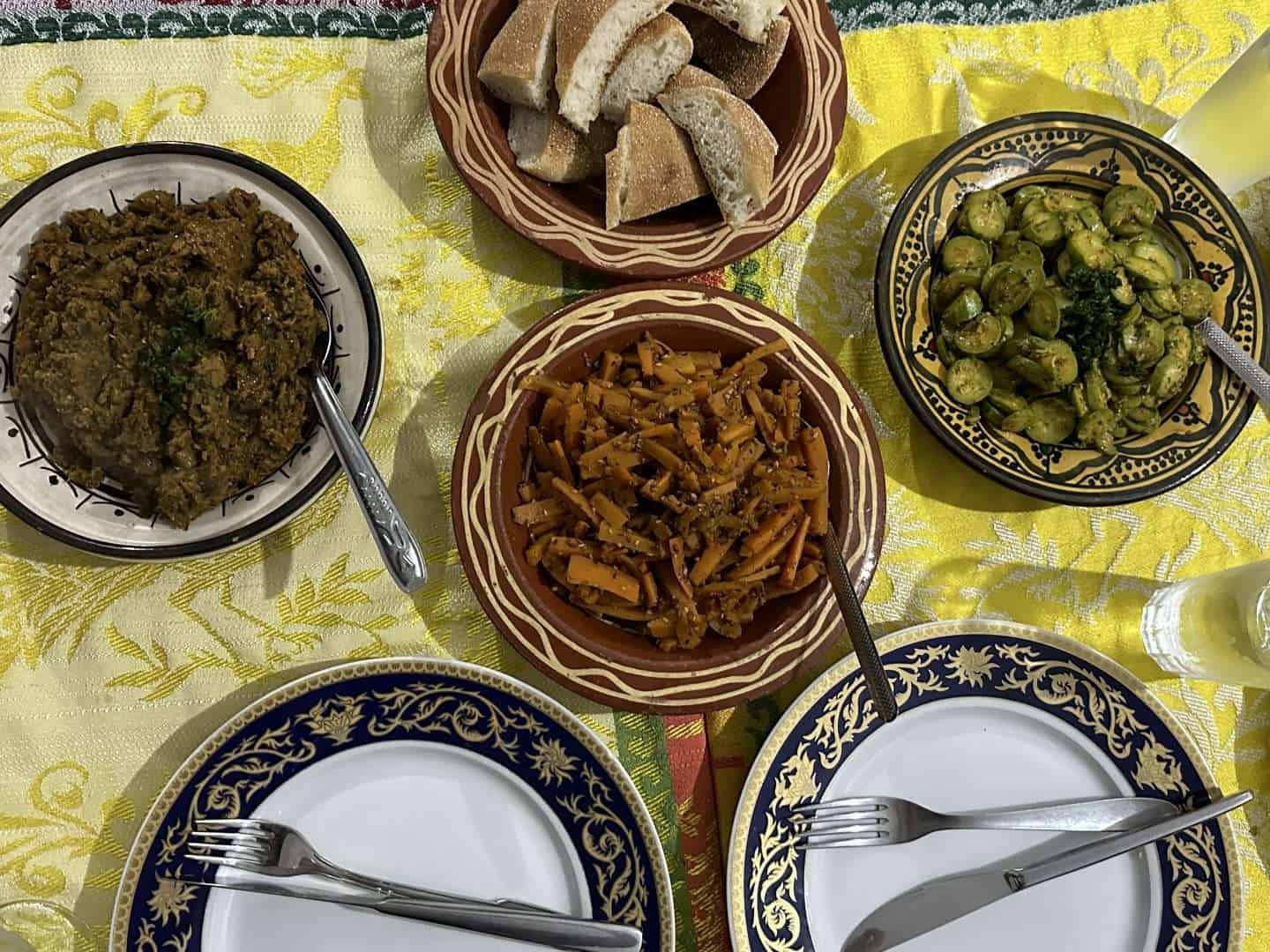
Some of the links in this post contain affiliate links. What does that mean you ask? I may earn a small commission, but you won’t pay any extra. These links also help fund and support my page.
Why take a Marrakech cooking class
There are a number of reasons why you should take a cooking class in Marrakech. Cooking classes are a great way to learn about local culture through food, while also getting a delicious meal. As someone who has food anxiety, trying new foods can be a little overwhelming. This is especially in a foreign country where there’s also a language barrier. With a class you get the chance to see what goes into a dish before trying it, and there are plenty of other foods to try if one isn’t for you.
In Morocco, and many areas of the world, going to a food market (instead of a grocery store) to source produce and spices is a huge part of the cooking experience. The Marrakech cooking classes include a trip to nearby market stalls to buy produce and/or spices, while explaining what to look for when shopping.
The Marrakech cooking class I recommend is held at the host’s home. This allows you to have a more personal view into the life and home of local Moroccans.
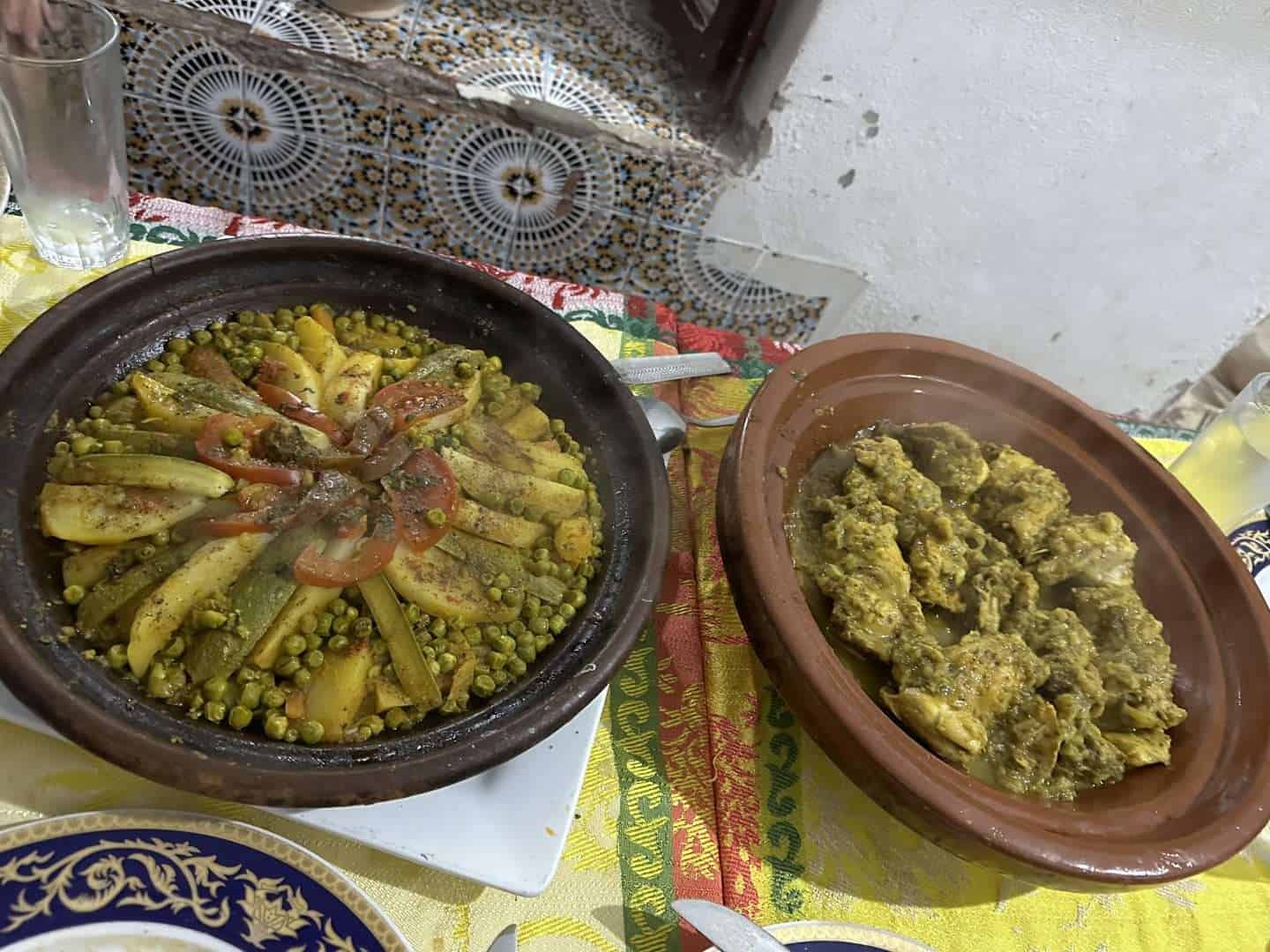
What will you cook in a Marrakech cooking class
The staples of a Marrakech cooking class will be different types of tagines and salads. As there usually are a mix of vegetarians and meat eaters in a class, you will cook both vegetarian and a lemon chicken tagine.
Lemon chicken tagine is a staple of Moroccan cuisine. The best way to cook this is with preserved lemons. The guide, Chef Laila, walks you through the steps to preserve lemons for cooking and uses for other ailments. The veggie tagine is a dish with a mix of different vegetables layered on top of each other and cooked in the tagine.
The salads and side dishes will vary based on the time of year you visit, and what food is in season. Also note that a salad in Morocco is not the same culinary experience as in North America. Don’t expect to find a caesar or a bunch of leafy green salad options. In Morocco, a salad may just be a bowl of diced raw tomatoes and cucumbers.
One of the “salad” dishes that we made in our class was Za’alook, an eggplant salad. In reality, this is more like an eggplant spread. I’m not a big eggplant fan, the texture and consistency is kind of strange to me, but as the youths say this was FIRE. Moroccans love bread, and there will be plenty of the traditional Moroccan bread (Khobz) to eat with the eggplant salad.
We did not cook a dessert in our class, instead there were Moroccan pastries including Briwat, a triangular puff pastry with almond, honey and sesame seeds.
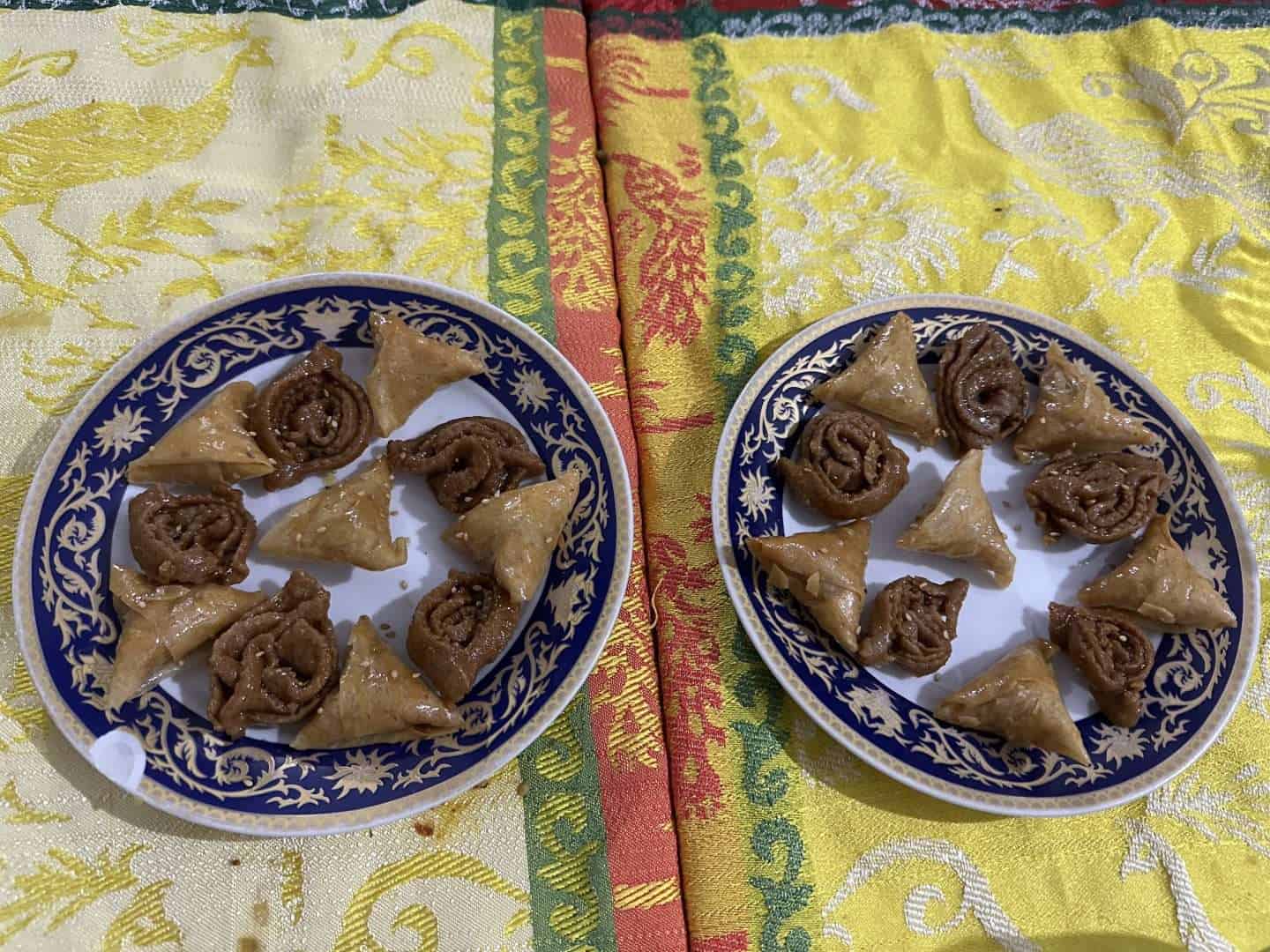
What to expect from a cooking class in Marrakech
The itinerary below is based on my personal experience during the cooking class with Chef Laila.
There are two options for classes with Chef Laila, both are ½ day cooking workshops. There is a 10am and 3pm class. Expect each class to last for around 4 hours from start to finish.
You will meet the group at a designated pick up location in the medina. After everyone arrives, the host will walk the group to gather fresh ingredients for cooking at one of the nearby food stalls. Our host, Chef Laila, discussed the different vegetables that are used in Moroccan cuisine, and how to find the best produce.
Next, the group will walk to the family home. The cooking class is held at Chef Laila’s home, so you get a truly immersive cooking class. Her family is also a part of the experience acting as sous chefs and support.
During the class, Laila and her family walk you through some of the key components in Moroccan food dishes like ras el hanout, a moroccan allspice. Leila and her family make their own special mix with 12+ ingredients, which is more than you’ll usually find at the spice market. Preserved lemons are also a key component to many Moroccan dishes. Here they explain how to make the preserved lemons, and how long they should sit before you cook with them.
While learning about the different dishes and ingredients, everyone in the class will be given different tasks like slicing, peeling or grating ingredients for the meal.
After all the prep work is done, you’ll move to the sitting area to chat with other travelers while drinking water or mint tea.
Finally, you will get to enjoy the fruits of your labor, the meal!
Marrakech cooking class review
When I say the chicken tagine was the best thing I ate during my week in Morocco, I’m not being hyperbolic. My friend and I took this class on American Thanksgiving, as a way to do something fun and food related. Honestly, it is one of the best Thanksgiving meals I’ve ever had, let alone the best meal in Marrakech.
I recommend anyone looking for cooking classes in Marrakech join the class with Chef Laila. Not only do you get an incredible meal, but you also spend time learning and interacting with locals as well as other travelers. The class is fun and interactive. And if you need a break from the various museums and cultural sites, this is a totally different experience of Moroccan cooking and culture.
The price of the class is worth it alone. You get a delicious home cooked, multi-course meal for under $35 per person. I’ve spent more than that on drinks with friends in Seattle when you add in tax and tips.
After the class, they will text you links to recipes used in the class, and others that were not covered, so you leave with an arsenal of Moroccan cooking options.
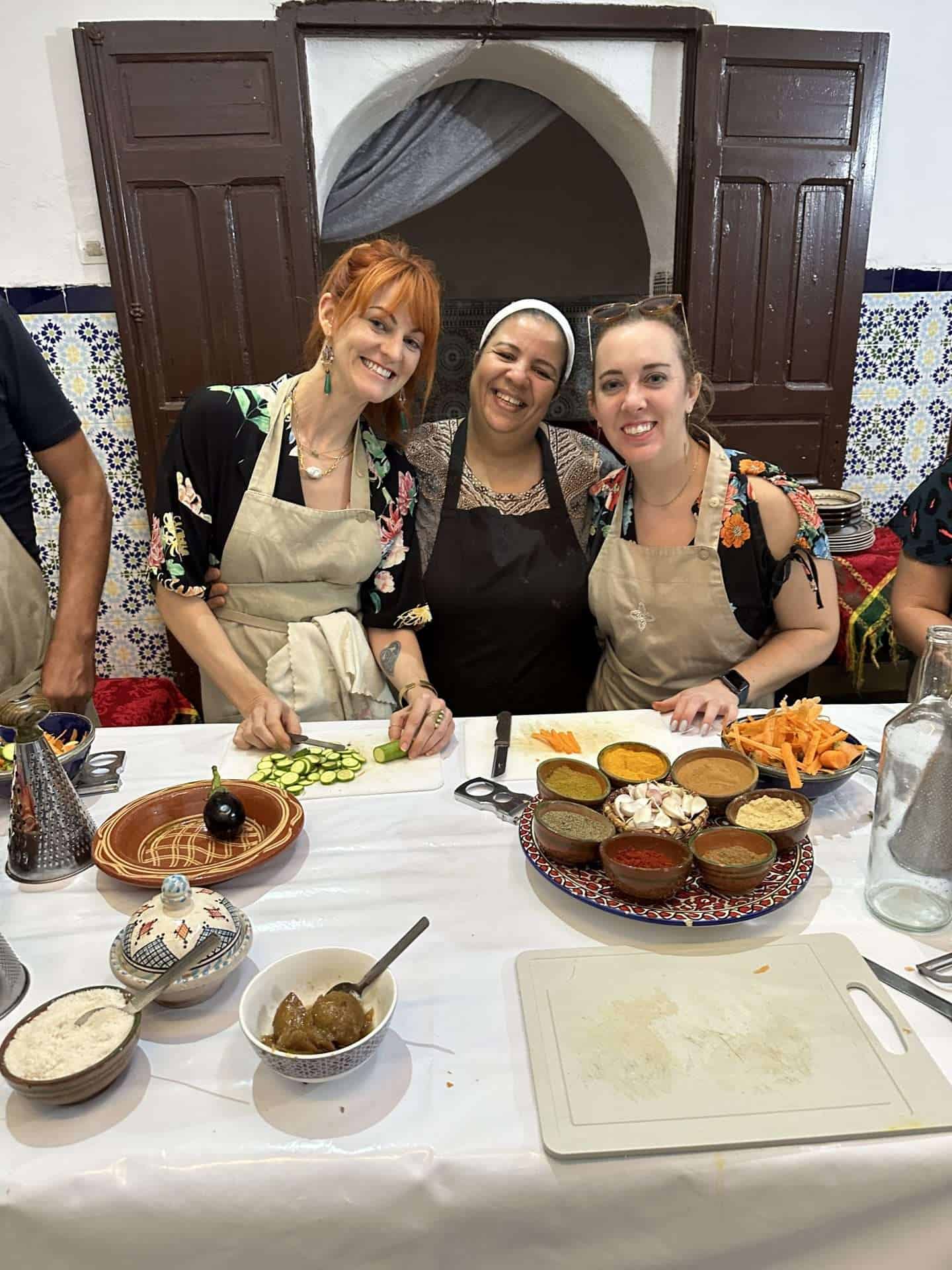
Marrakesh cooking class FAQs
What is the best cooking class in Marrakech?
The best cooking class in Marrakech is the half day cooking class with Chef Laila. Her classes have a 98% rating on Viator with hundreds of 5 star reviews.
What should I eat first at a Moroccan restaurant?
You should definitely start with a couscous or a tagine. I would personally recommend a tagine first. There are meat and vegetarian tagines available, but my favorite is a lemon chicken tagine.
Additional posts on traveling in Morocco:
